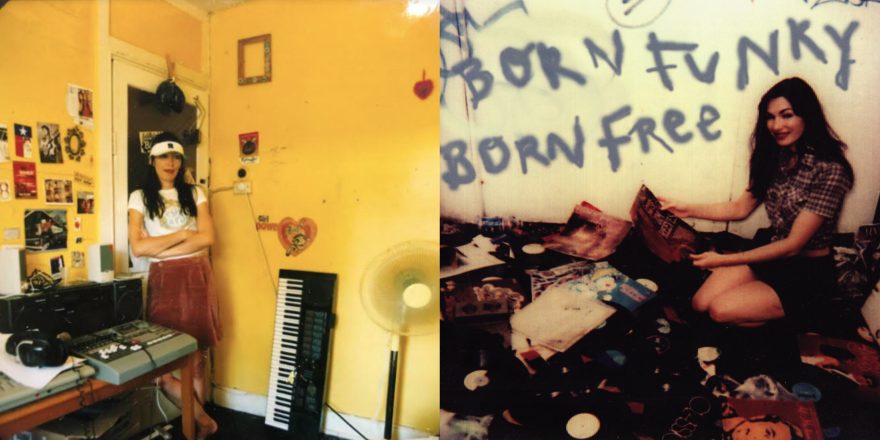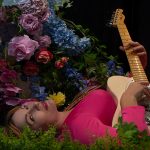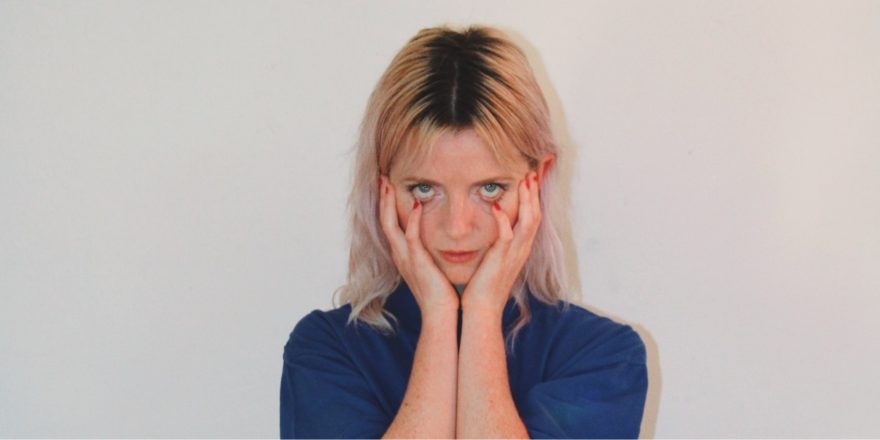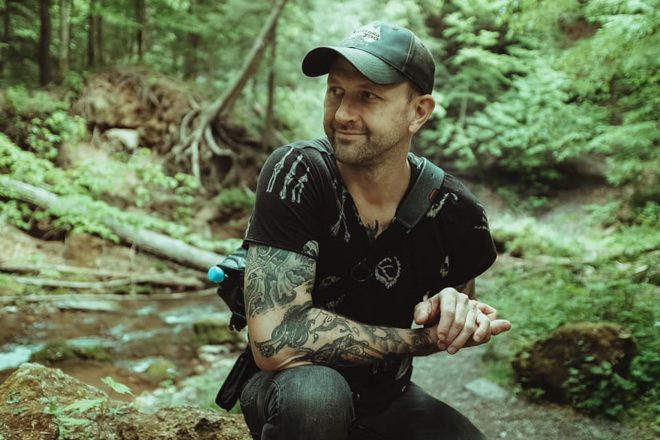I’ve officially lived in album cycles for the last 20 years now.
My first solo album, Born Funky Born Free, was self-recorded and produced in my bedroom, and independently released on my own label Chiquita Records in 2002. I did my own artwork on a creaky old computer, made a music video with my friends, and telephoned and schlepped around to record stores to hand sell it. I toured it and posted CDs around Australia to street press and fans. I could not imagine how I could ever get my music out in America or Europe at that time.
Cut to 2022, seven solo albums and numerous other releases later: I’ve just released a single, “Half Girl Half Beast,” recorded with my band a couple of months ago. We’ve been trying to record a new album since the beginning of the pandemic but things like COVID and work and lockdowns and other commitments keep getting in our way. “Half Girl Half Beast” is a song from Born Funky Born Free that I first recorded on an ancient Casio, an ‘80s drum machine that I stole from my dad, and my big brother’s hand-me-down cherry red Ibanez electric guitar. My friend Cathy Green, from Aussie punk legends X, added snaky bass. I hadn’t played it since that album cycle came to an end, but I decided to resurrect it for the tour I just embarked on with The Great Beyond, as a way to celebrate the 20th anniversary of the record. The crowds went wild for it, so when we finally got the opportunity to slip into a studio for a few hours, we busted it out. My dad — who played Hammond organ to accompany the strippers in downtown Adelaide in his first after school job aged 13 — was with us, and so he showed us how it was done and laid down some deep Hammond grooves.
I spent 10 years playing, recording, and touring in bands before I hunkered down to make that first album, in my bedroom, by myself, with a digital 8-track hard disk recorder that I knew as much about as I knew about anything else — which was mostly nothing. But that never stopped me doing anything, and I was ready to listen to my ears and trust my instincts and see what I could come up with on my lonesome. I wanted to tickle my own fancy and run my own race. I didn’t want to be egalitarian.
I had worked in an outlet CD store that allowed me to purchase a great collection of dub and reggae albums and compilations from the $4.99 table, and spent most days immersed in the soothing vibes of Lee Perry, Sly & Robbie, and King Tubby, when I wasn’t giving myself over to Betty Davis and various other space funk soul sisters. I also spent a lot of time listening to Kris Kristofferson and Dolly Parton. I wanted to put everything I loved into a melting pot and see what happened. I wanted to find myself in the music I would create, with no preconceptions. I would walk my young daughter to school, come home, make a cup of coffee, and plug a microphone and an instrument into the shiny new magical hard disk recorder, close my eyes and get to work in the couple of hours I had before I had to leave for my actual job. It never took long for a song to emerge. I felt like a living, breathing song machine. I’d leave it skeletal and go to work at the vintage clothing shop, where the new song would percolate throughout the day as I soaked in more sounds and let them swim around together, bleed into each other. At night, after I tucked my daughter into bed, I’d smoke a little joint to jump kick me back into a creative zone and return to my bedroom studio. Sometimes I would just bring the 8-track into bed with me, and lie there layering sounds til it felt done. I had been messing around with a 4-track recorder for years, so I loved the freedom of so many tracks.
The album I ended up making was driven by one-string needly guitar parts played on the Ibanez — which possessed a powerful whammy bar — one-string bass riffs, tinny Casio riffs, and odd sound effects and beats from the drum machine, all fed through delays and reverbs, dub style. The album also had tinges of old school country, soul, and blues, and featured freeform lyrical journeys through imaginary worlds populated by loudspeakers, foxy ladies, horoscopes, dark bedrooms, rivers, shadows, fortune-telling machines, instincts, and destinies. Sometimes when my musician friends would come by, I would invite them upstairs to add a guitar or bass part and take the song somewhere else. I had taken notes of frequencies and BPMs and ways to spread sounds around in audio magazines and interviews with producers and the phenomenal Mick Harvey of Bad Seeds fame casually showed me how to do a basic mix. The fact that he didn’t scoff at my efforts was a tacit sign that I was on the right trail. I knew I was making a really weird-sounding album that was not likely to find many listeners, but I couldn’t stop. I was in love with it, and with the whole process. It felt like a statement album: This is who I am, if you don’t like the heat, get out of the kitchen. I’d always been a weirdo, I was just letting it all hang out — half girl, half beast. I didn’t even think about trying to find a label to release it; I just got it all ready for release, got quotes from CD printing places, squirreled away what funds I could towards it, and put the rest on a shonky credit card. Once I’d paid it off, I was ready to make the next one.
Releasing music is second nature to me now, from whoa to go. From writing songs to the germs of album conception to promoting. Much of the work is done inside my own mind. The moment I know what my next album will be called and have an idea for the cover art, I’m off on the journey, plotting and planning, making choices about songs, mood, players, instrumentation, studios. So much of it is streamlined now — the ease with which I can design and submit albums to distribute digitally still blows my mind, and the ability to email links and download codes and press releases to outlets, radio, and journalists all around the world rather than posting physical copies and following up is a wondrous joy. It’s still a hell of a lot of work, but I know the rhythms of the cycle now, and understand the highs and lows that come with each release.
I released an album every couple of years like clockwork after Born Funky Born Free, and was getting to ready to start work on a follow up to 2017’s Lovers Dreamers Fighters in early 2020, until I was foiled by the arrival of the pandemic and my family’s departure from one side of the world to the other in response to it. Despite the larger than usual time-gap between releases, I’m excitedly making inroads into what will be my eighth solo studio album, and obsessively daydreaming it into reality. I like being boss of my own tiny world.
(Photo Credit: left, Andrew Cowan)







